In this article, we will tell you everything there is to know about the Monstera deliciosa plant.
Keep on reading to learn:
- How to grow and care for the Monstera deliciosa plant
- Its native habitat
- The Monstera deliciosa fruit
- And more!
Want to see a wider range of Monstera plants? Check out our post on Monstera Varieties.
Genus
Monstera plants are among the most popular indoor plants. Their name refers to the genus Monstera, which includes more than 30 accepted species of Monstera plants.
The Monstera deliciosa is one of many such species. In addition to the accepted species, there are more than 100 types of Monstera plants worldwide!
Common Names
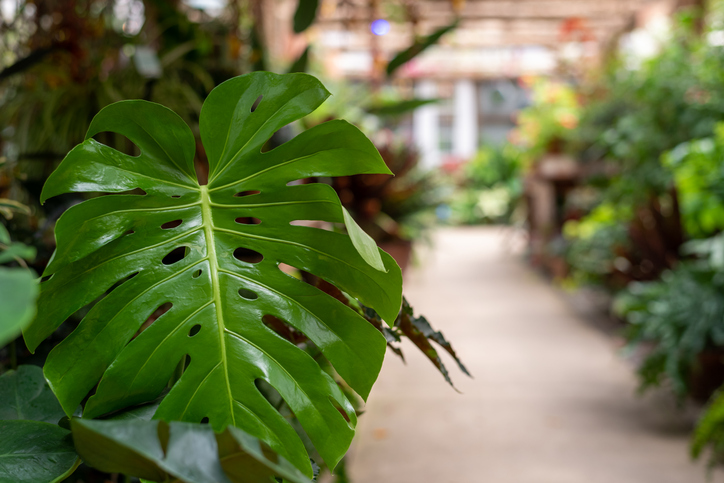
Common names for the Monstera deliciosa include the Swiss Cheese plant, Split Leaf Philodendron, and the Monkey Leaf plant.
However, this beautiful plant is unique and markedly different from the true Split Leaf Philodendron, an entirely different genus, although both plants belong to the same Araceae family.
Furthermore, the Monstera deliciosa is often called the Swiss Cheese plant for its showy leaves that come with fenestration patterns, which are natural holes in the leaves.
However, as a plant enthusiast, you should not confuse the deliciosa with the Monstera adansonii, also known as the Swiss Cheese plant.
Varieties of Monstera Deliciosa
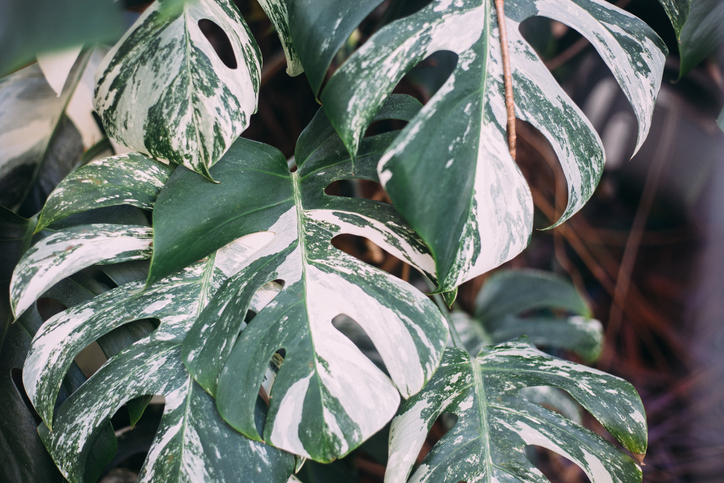
The Monstera genus has over 100 species of plants in varying shapes, sizes, and leaf patterns, not to mention pigmentation.
This species also boasts several varieties, including variegated and non-variegated types.
Variegation refers to the Monstera plant’s different color patterns and distribution because of chlorophyll-dependent pigmentation.
As such, variegation can cause white, cream, yellow, and shades of green to distribute randomly across the plant stems and leaves.
Popular Monstera deliciosa varieties include:
- Monstera deliciosa variegata
- Monstera deliciosa “Borsigiana”
- Monstera deliciosa “Thai Constellation”
- Monstera deliciosa “Aurea”
- Monstera deliciosa “Marmorata”
The original variety possesses white-green variegated, heart-shaped leaves adorned by beautiful fenestration patterns.
The plant produces an edible fruit called the Mexican breadfruit, which tastes like a mix of pineapple, mango, and banana. The fruit and deliciosa flowers are edible and often used to make a certain kind of fruit salad.
While the Monstera deliciosa fruit is edible, its leaves are toxic to both humans and animals. The reason for this is the presence of insoluble calcium oxalate crystals in the plant.
These irritate the mucous membranes of the mouth and throat and disturb the sensitive lining of the gut, causing a burning sensation and indigestion upon consumption.
Similarly, the unripe green fruits from the plant are also toxic and inedible. If ingested, they cause indigestion and mouth burns.
In addition to its popularity among indoor plant enthusiasts, the Monstera deliciosa is also the most well-known and largest species of its genus. It can reach up to 15 feet in height, with 18-inch wide large leaves with varying color patterns!
Origin Of the Monstera Deliciosa
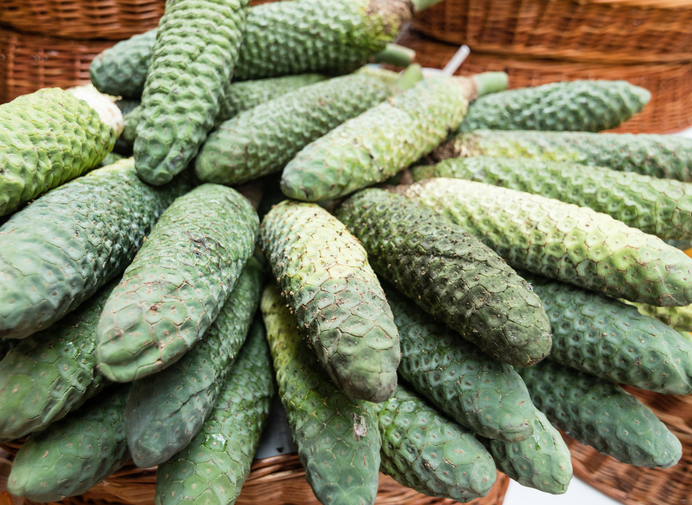
The Monstera deliciosa is native to the tropical areas of Central America and Southern Mexico. It was first discovered in the Americas by renowned French botanist Charles Plumier in 1693.
Since then, it has been regularly brought to Europe to use as a houseplant. Although Monstera deliciosa does not produce flowers when grown indoors, its flowers and edible fruit were why people in the U.K. first got interested in the plant during the 1700s.
You can easily find the scan of the original transcript online, in which Charles Plumier described the Monstera plant. It also includes the first-ever western drawing of the Monstera adansonii.
The unripe fruit resembles a green ear of corn with hexagonal scales. As the unripe fruit reaches maturity, some of the scales break away to reveal a creamy-white flesh of the fruit underneath.
It has the sweetness of a banana, accompanied by acidic notes of a pineapple, and the edible fruit is rich in Vitamin C.
Once fully ripe, you can easily pull apart the scales. However, if you feel a bit of resistance, it means the fruit is unripe.
Care Guidelines
Here’s everything you need to know about growing Monstera deliciosa and caring for it!
Light
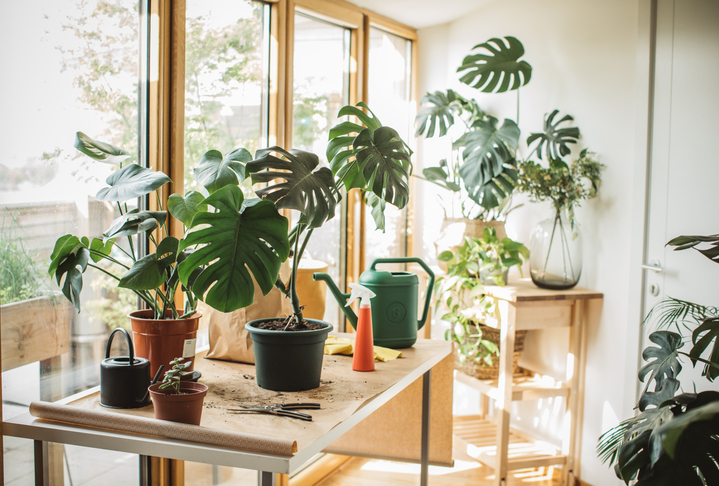
Monstera deliciosa thrives in warm climates and loves bright indirect light. Plant it in a shady spot if you’re looking to grow it outdoors.
When growing this plant indoors, you should place it in a spot that receives at least 12 hours of indirect sunlight.
Direct sunlight for prolonged periods can cause sun scald, a condition characterized by burned leaves.
Direct light is also dangerous for a variegated plant because the lack of chlorophyll will cause the leaves to get damaged quickly.
Bright indirect light will suffice in both the summer and winter months.
Watering
Since Monstera deliciosa is a tropical plant, it requires plenty of water to thrive. However, care should be taken not to overwater the plant since it causes root rot.
If your plant grows in a pot, ensure the soil is completely dry between watering periods.
Humidity
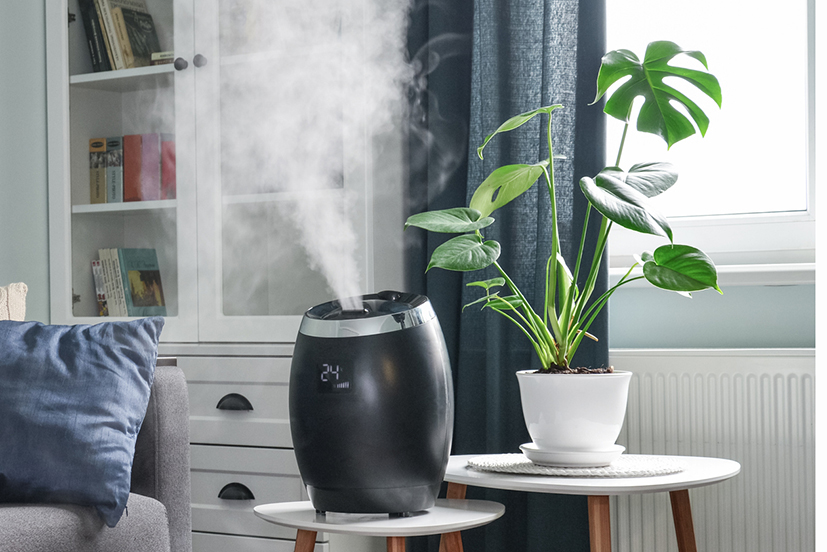
The Montera plant thrives in high humidity. In fact, it cannot survive in a below-50% humid environment.
However, ensure your pot has plenty of drainage holes to prevent waterlogging. While the plant thrives between 60-80% humidity, inadequate drainage holes can cause a spike in moisture levels and cause multiple complications.
Fertilizer
A new plant will require extra nutrition to get it started, although the Monstera deliciosa plant has medium fertilizing requirements.
Aim to fertilize the plant once a month using diluted fertilizer. Your average NPK (20:20:20) is perfect for the Monstera plant.
If you’re using new soil or trying to encourage fruit growth, you can use a diluted fertilizer every three weeks. The frequency is not standard and also depends on the soil mix.
Soil Mix Recommendations
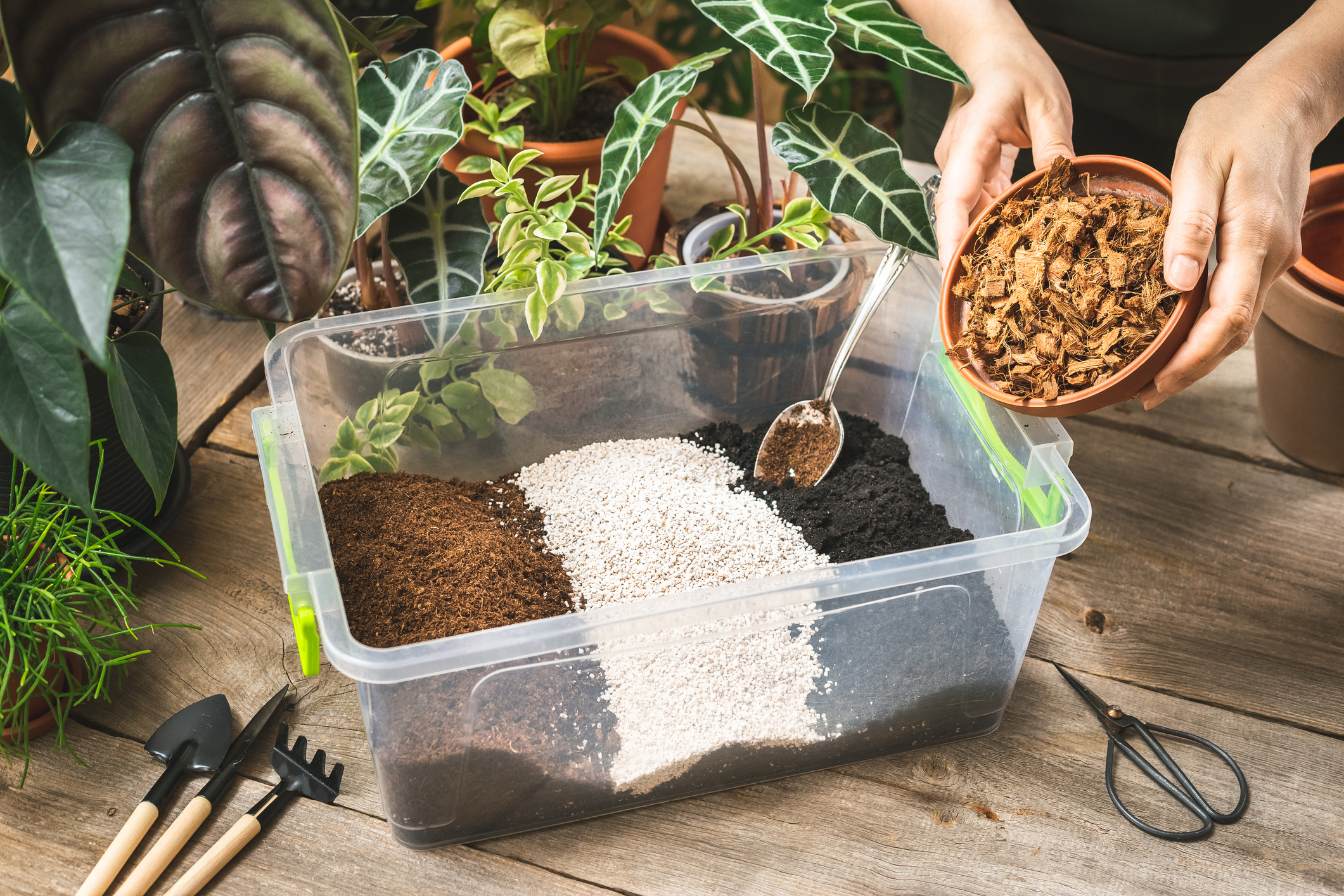
The Monstera plant is not fussy over soil requirements. However, you need to focus on two things: drainage and pH.
The plant loves a neutral pH since acidic soil can damage its roots. It will help if you use well-draining soil mixed with perlite for plenty of aeration.
Pot Types and Pot Sizes
Depending on the size of your houseplant, it’s best to use pots with adequate growing space and drainage holes.
Medium-sized pots are typically used to facilitate the plant’s lateral and vertical growth. Since it’s a climber, you can encourage vertical support by adding moss poles.
Aerial roots can grow along the support and do not damage surfaces. Aerial roots also encourage new plant growth.
A heavier ceramic or terracotta pot is recommended for mature plants to house more soil and prevent the length of the Monstera deliciosa from tipping it over.
Repotting
Repotting should be done at least once a year or depending on the growing season. Home growers recommend doing it during the spring to encourage rapid growth of the plant during the summers.
You should always add vertical support in the new pot before repotting.
When it comes to pot size, it would be best if you choose a pot only 1 or 2 sizes larger than your current one.
Propagation
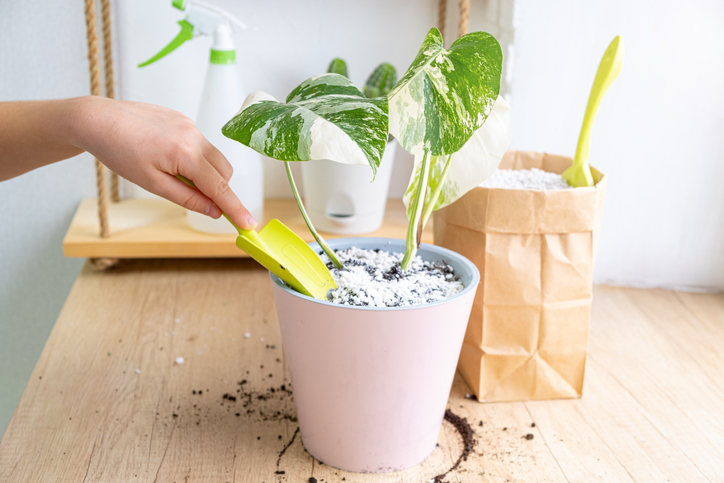
The Monstera plant is very easy to grow compared to other houseplants. The plant is commonly propagated using stem cuttings, although other methods exist.
If you’re using stems, ensure the cutting is taken just after a leaf node and includes aerial roots.
The plant cutting can be rooted either in soil or filtered water, with the bottom leaves removed. Cuttings rooted in water are easy to grow and should be transplanted after a few weeks.
You can divide the plant’s suckers into foot-long sections and directly root them in the soil. Once they sprout, you can transplant them into a new pot.
Air layering is another popular propagation method. Simply wrap damp sphagnum moss around a stem where a leaf axil and aerial root are present.
Secure the setup with a string and enclose it in a clear plastic bag, ensuring there are holes in it for ventilation.
Once you see adequate root formation, you can clip the cutting and directly root it in the soil!
Growing From Seed
Growing from seeds is rarely a good idea because propagation is rather slow, and the seeds are hard to come by.
Seed germination can be done in moist soil or using the wet paper method. In both cases, you should ensure adequate moisture retention and a warm temperature to encourage root and shoot formation. The seedlings have a low shelf-life and cannot handle dry environments and cold temperatures.
It’s easier to germinate them in a damp sponge, damp cloth, or a wet paper towel.
Pests and Diseases

Root rot is the most serious disease you need to worry about when it comes to your Monstera plant. It is caused by overwatering and can quickly kill your plant. You can identify root rot by looking for decaying plant tissue.
Since the plant and its growing fruit are slightly toxic, most common pests tend to stay away from it.
However, some common pests might find their way to your plant. These include mealy bugs and spider mites. You can verify a pest infestation by the presence of black stems and white “dust” on leaves.
Foliage & Leaf Shapes
Monstera deliciosa varieties typically have large, ovate, heart-shaped leaves. The foliage can have varying colors, commonly possessing a dark-to-light green color pattern and a leathery texture.
The leaves can split depending on how excessive the fenestrations are, like in the case of Monstera obliqua varieties.
The Swiss cheese plant will develop dense foliage as it matures, and the fenestration will also increase. Other colors of deliciosa varieties include white, yellow, creamy, and light green variegated leaves with differing sizes and color distribution patterns.
Growth and Maturation

Your houseplant will reach a maximum height of 15 feet, depending on vertical space.
As the plant matures, vertical growth will surpass lateral growth every growing season. Fenestration will also increase with maturation as well as the leaf size.
Outdoor Monstera plants can grow up to three times their indoor height! They’re slow-to-medium growers and typically add no more than 2 feet to their height per year.
Common Problems and How to Fix Them
Common problems with your Monstera houseplant include three persisting issues.
Yellowing Leaves
Yellowing or browning of leaves is an indication of improper watering. Inspecting the soil and roots can help identify whether the issues are overwatering, underwatering, or pests.
Make sure the soil is always dry before you water the plant.
Drooping Leaves
Drooping leaves are most commonly a result of underwatering and temperature stress.
Thirsty plants will wilt to limit water loss from excessive transpiration. Always ensure your Swiss Cheese plants receive adequate watering and are not subjected to temperatures above 85 and below 50 degrees Fahrenheit.
Root Rot and Pests
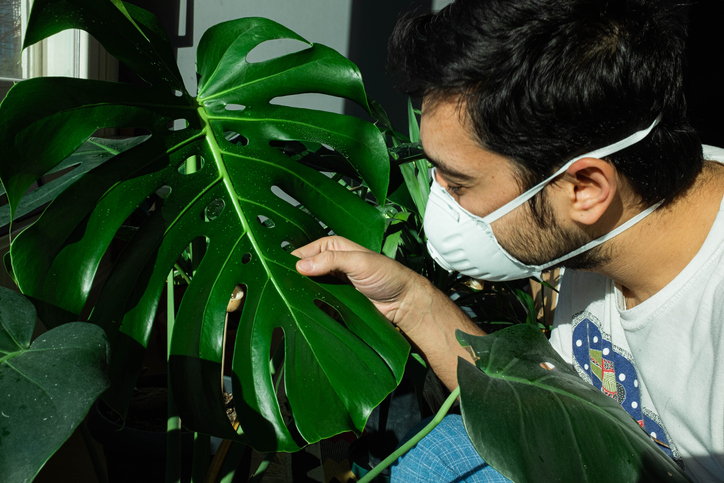
Root rot is commonly caused by overwatering and causes the stems and roots to become black.
To fix it, you should remove the affected parts and repot your Monstera in a new and well-drained pot, using an aerated soil mix.
Scales and mealybugs are common pests. You can find them on the stems and underside of the leaves. Use a Q-tip with alcohol to scrape them off.
Fungus gnats plague the potting soil and can be seen as tiny flying specks. To remove them, you can add activated charcoal to sterilize the topsoil or spray it with a mixture of water and 3% hydrogen peroxide.
Where to Buy & Price
Monstera deliciosa is widely available in commercial markets. You can buy it from eBay, NSE Tropicals, and even social media platforms.
If you prefer homegrown varieties, you can try Etsy for sourcing your greens. Monstera deliciosa can cost anywhere between a few dollars to several hundred, depending on whether you’re buying a cutting or a mature plant.
However, variegated deliciosa varieties can set you back several thousand dollars depending on rarity!
Toxicity to People & Pets
Monsteras are generally considered safe for humans but they can be harmful to dogs and cats due to their toxicity. If pets come in contact with these plants, they may display a variety of symptoms, including mouth irritation, swelling, and discomfort in the lips, tongue, and mouth. Moreover, affected animals may also experience excessive drooling, vomiting, and difficulty swallowing.
Unripe fruits cause similar scenarios. Therefore, it’s best to keep the plant out of reach of small children and pets!
Frequently Asked Questions
Q. What is the Monstera deliciosa’s fruit?
The Monstera deliciosa fruit or Mexican breadfruit is the edible fruit of this plant, and it grows only in outdoor environments. The fruit is said to taste like a mix of pineapples and bananas.
Unripe fruits from your Monstera should never be consumed as they are toxic.
Q. Is Monstera deliciosa the same as Split Leaf Philodendron?
The Monstera deliciosa is completely different from a true split leaf. Although both plants belong to different genera and species, they belong to the same aroid family.
Q. How do you take care of a Monstera?
Your Monstera requires plenty of indirect sunlight and a warm, humid environment to thrive. Be careful in watering, and always repot your plant every year. Add vertical support to encourage aerial root formation and denser foliage!

My name is Daniel Elrod, and I have been houseplant love ever since I was 17. I love how much joy they bring to any room in the home. I’ve always been amazed at how a few pots of flowing leaves can turn a drab and sterile office into an inviting place where people love to work at.






